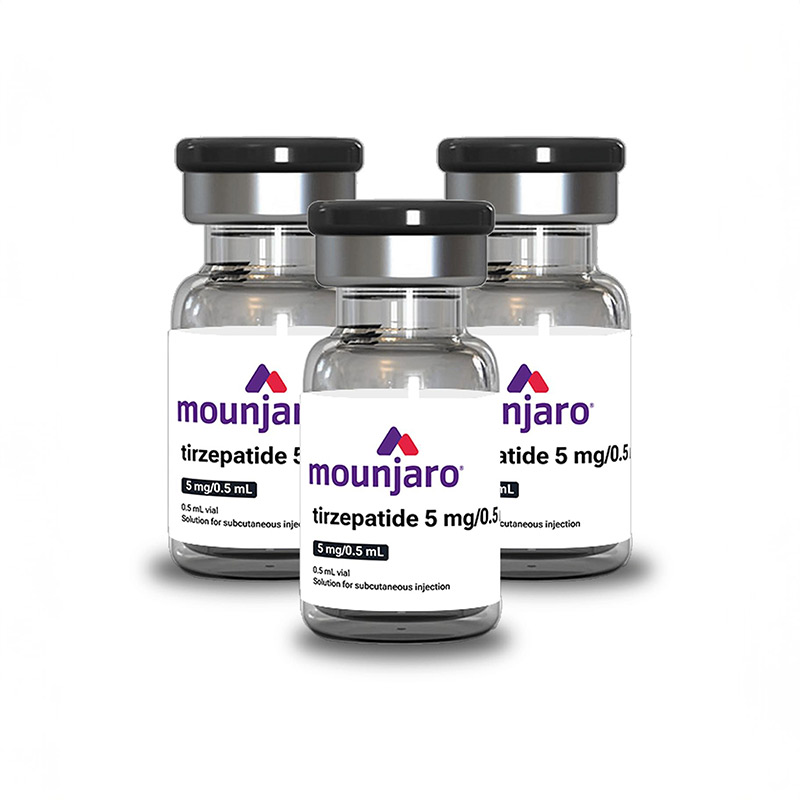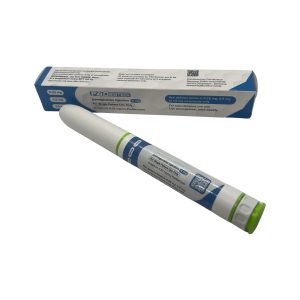Mounjaro
Tirzepatide (otherwise known by the brand name Mounjaro) is a weight loss and type 2 diabetes medication that has recently gained attention. That’s because it’s both a glucose-dependent insulinotropic polypeptide (GIP) and glucagon-like peptide 1 (GLP-1) receptor agonist medication — the first of its kind.
As the first dual GIP and GLP-1 medication, Tirzepatide is showing amazing weight loss results in clinical trials and clinical practice.
So, what’s the deal with Tirzepatide and how does it work for weight loss and as a type 2 diabetes and obesity treatment? If you’re looking to learn more about Tirzepatide then we’re diving deep into everything you need to know about this drug, how it works.
What is Tirzepatide?
Tirzepatide is a medication used to help patients with type 2 diabetes navigate glycemic control (lower blood sugar) and lose weight. Type 2 diabetes is a long-term health condition where blood sugar levels are too high due to the body not producing enough insulin or not producing insulin properly.
This can lead to other serious health problems like increased cardiovascular risk, kidney disease, and obesity. Tirzepatide works to lower blood sugar levels by increasing the production of insulin and decreasing the amount of sugar produced by the liver.
Like other weight loss drugs, Tirzepatide also slows down how food is metabolised by the body, which in turn makes people feel fuller for longer and aids in weight loss and body weight reduction.
How does Tirzepatide work for weight loss?
As a dual GIP and GLP-1 receptor agonist, Tirzepatide works on the glucose-dependent insulinotropic polypeptide (GIP) receptor agonist and the glucagon-like peptide 1 (GLP-1) receptor agonist.
You may have heard the term glucagon-like peptide 1 before because that’s the receptor agonist that other weight loss and diabetes medicines, like Wegovy, target.
But, what makes Tirzepatide different is it’s the first combination of 2 classes of medications, the GIP and GLP-1 receptor agonist which are both incretin hormones that are released after food intake.
Tirzepatide works by mimicking both of these receptor agonists, which includes processes like alerting the pancreas to stop releasing insulin after eating and sending signals to the liver to decrease glucose levels.
In turn, this not only helps you feel fuller for longer but it slows down digestion, and aids in glycemic control, which all lead to weight loss and weight management.
Clinical trials have shown that Tirzepatide has beneficial effects on helping those with type 2 diabetes and obesity lose weight and aids in weight management too. A clinical trial with over 2500 people who were either obese or overweight was split into 2 treatment groups: people taking Tirzepatide and people in the placebo group.
The clinical trial showed a weight loss of 15-20% of their starting body weight in 72 weeks for people taking Tirzepatide. On the other hand, those in the placebo clinical trial group only showed average weight reductions of 3%.
What Are the Side Effects of Tirzepatide?
Like all medications, Tirzepatide does have some side effects. While most side effects tend only to occur when first starting the treatment or increasing the dose, they’re still important to keep in mind when deciding to take Tirzepatide.
The most common side effects of Tirzepatide are:
- Vomiting
- Nausea
- Diarrhea
- Loss or decreased appetite
- Abdominal pain
- Constipation
Aside from these common side effects, Tirzepatide can also cause low blood sugar and its advised to seek medical attention if you experience any of these adverse effects:
- Dizziness
- Blurred vision
- Anxiety, mood changes or irritability
- Sweating
- Slurred speech
- Headaches
- Fast heart rate
How is Tirzepatide Administered?
Tirzepatide is administered as a weekly subcutaneous injection, meaning the pre-filled pen is injected under the skin, usually in the stomach, thigh or upper arm. Tirzepatide can also be administered with or without meals at any point in the day.
You should follow the dosing schedule recommended by your doctor. In general terms, a typical dosing schedule starts with a low dose and is gradually increased to 5mg once a week after 4 weeks of treatment. If you require further glycaemic control, the dosage can be increased to 10mg once a week.
It’s also important to note that you can take insulin in the same area as Tirzepatide but they shouldn’t be given right next to one another, nor should they be mixed in the same injection.




